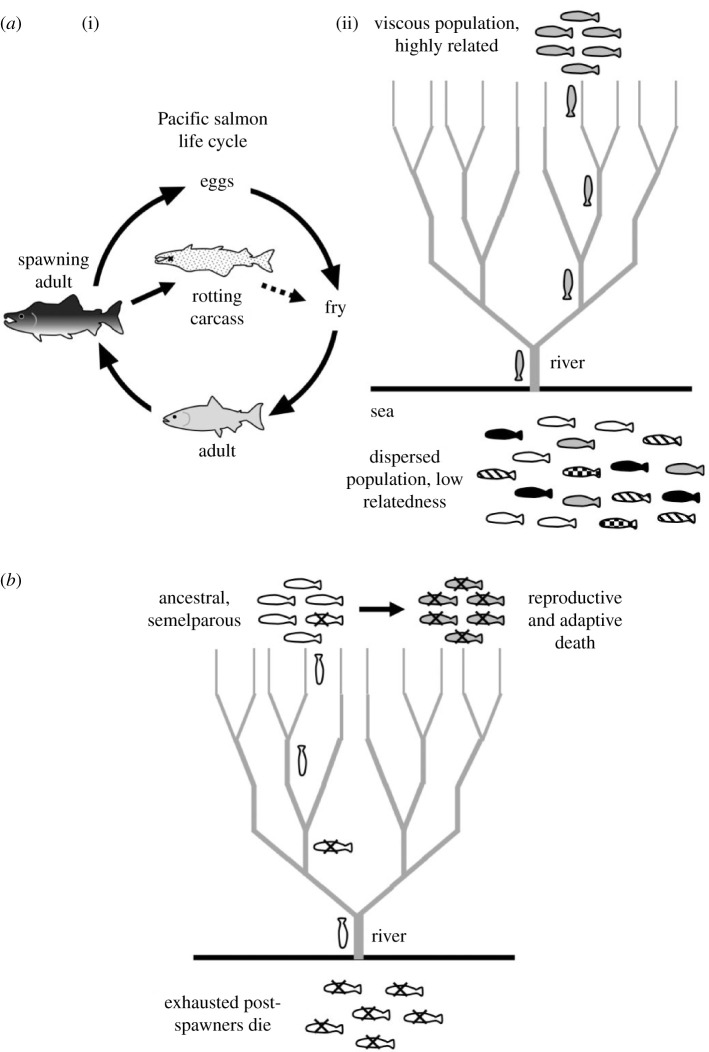Figure 2.
Hypothesis: evolution of adaptive death in Pacific salmon. (a) (i) Pacific salmon life cycle, including hypothetical biomass sacrifice adaptive death [44]. Dotted arrow: post-mortem resource transfer from post-spawning adult to fry (juvenile fish). (ii) How Pacific salmon could meet the conditions for evolution of adaptive death: viscous populations of closely related individuals. Thanks to their homing capacity, closely related groups of salmon leave the dispersed, outbred population in the sea and concentrate within their natal streams. (b) The double death hypothesis: adaptive death co-evolved with semelparous reproductive death. The figure describes a hypothesis about how adaptive death evolved in Pacific salmon from a purely semelparous ancestor. In the ancestral species (as in modern Atlantic salmon, Salmo salar), exhausted post-spawning adults swim or are carried down-river with only a small chance of further reproduction. Evolution of mechanisms to cause rapid death after spawning increases fitness via biomass sacrifice adaptive death (nutrients from decomposing carcasses increase survival of fry). Given the low fitness of post-spawning adults, evolution of adaptive death involves only a small loss of individual fitness.

